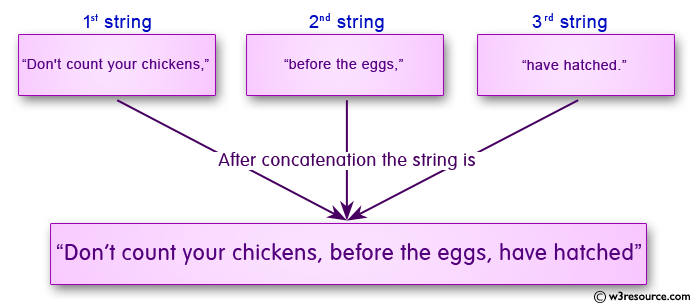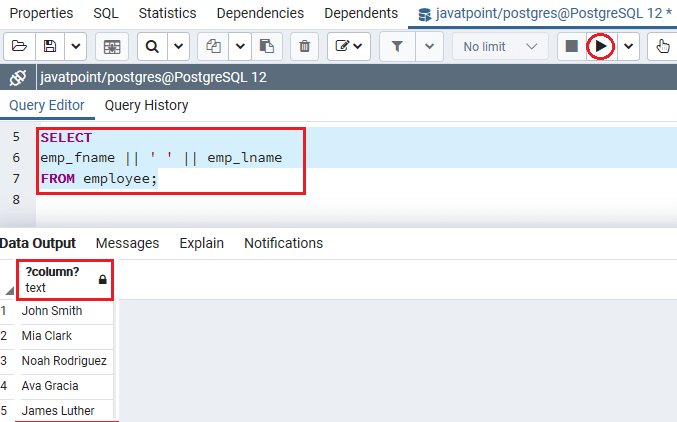

The operator provides a concise and easy-to-read syntax for string concatenation. does also not return NULL if any of the input parameters are NULL. There are several advantages to using the operator for string concatenation in PostgreSQL and Redshift: 1.You can reuse the same input multiple times (with different quotation using different format specifiers). (You mention trigger functions, where a lot of dynamic SQL is used.) provides format specifiers to safely and conveniently quote stings and identifiers (to defend against SQL injection and syntax errors), making it the first choice for dynamic SQL.

#POSTGRESQL STRING CONCATENATION CODE#
allows for readable, short code when concatenating variables and constants.only inserts a separator for not-null strings, simplifying that particular (frequent) case a lot.allows shortest syntax when concatenating strings with separators.CONCAT used in INDEX causes ERROR: functions in index expression must be marked IMMUTABLE.So not suitable where immutable volatility is required. has only function volatility STABLE (because it takes "any" input type and coerces the input to text, and some of these conversions depend on locale of time-related settings).allows shortest syntax for more than a couple of strings to concatenate.is less picky about input types as all input is coerced to text.does not return NULL if one argument is NULL. In SQL Server, concatenation is the process of combining or joining multiple strings together, commonly using the plus sign (+).concatenating string-types is IMMUTABLE, which allows their safe use in indexes or other places where immutable volatility is required.is more picky about input types as there are multiple different || operators, and the input types need to be unambiguous for operator type resolution.allows shortest syntax for very few strings to concatenate.is a bit faster than format() or concat().There are basically 4 standard tool for concatenating strings.


 0 kommentar(er)
0 kommentar(er)
